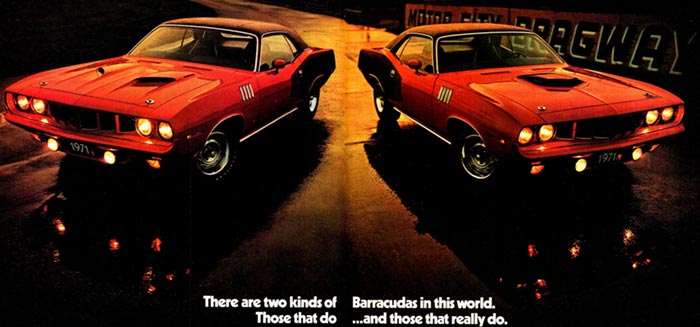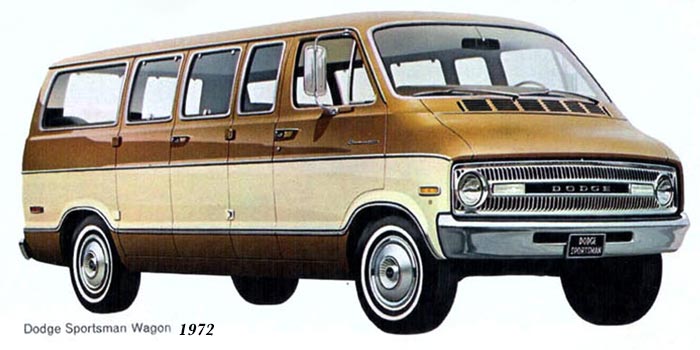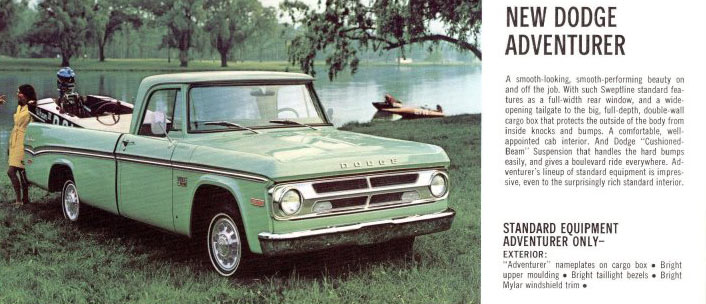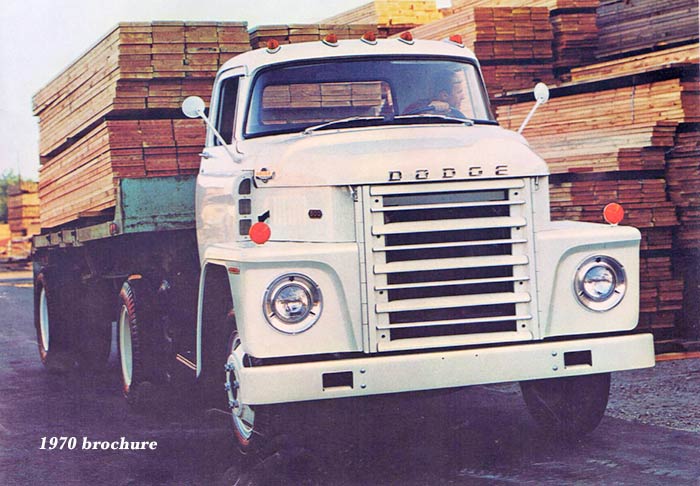Stellpower posted Chrysler-vs-the-world for 2021—so Motales is looking back half a century to 1971. Chrysler was doing well at the end of the muscle-car era, having bounced out of serious trouble twice. The first sign of serious problems was still years away.

In cars, Chevrolet dominated domestic sales in the U.S. with a 27% market share. That’s not GM; that’s Chevrolet. GM had a stunning 54% market share. Ford’s was 27%—that’s Ford, Lincoln, and Mercury combined. Chrysler had a mere 16%—8% Plymouth, 6% Dodge, 2% Chrysler, 0.1% Imperial—and AMC took up the other 3%, among American cars (not including imports).

Imported cars were around 17% of domestic car sales, and aren’t considered here. Overall, dealers sold 8.7 million new domestic cars, 2.0 million new trucks, and 1.5 million new imports.
The best selling Mopars were, by far, the Valiant (256,930) and Dart (242,787), when combined; the best selling single marque was the Fury (260,223). The Barracuda and Challenger, today worth small fortunes, had just 19,621 and 30,441 sales.
In the chart below, the bodies are noted by letter - A for Valiant/Dart, E for Barracuda/Challenger, B for midsized, C for large. The E bodies were between A and B in size.
| Plymouth | Dodge | Chrysler | Total | |
|---|---|---|---|---|
| A | 256,930 | 242,787 | 499,717 | |
| E | 19,621 | 30,441 | 50,062 | |
| B | 140,624 | 154,250 | 294,874 | |
| C | 260,223 | 109,247 | 160,965 | 530,435 |
| All | 677,398 | 536,725 | 160,965 | 1,388,070 |
Imperial adds 12,982 C-bodies to the 540,435 listed above, bringing the grand total from 1,375,088 (Dodge+Plymouth+Chrysler) to 1,388,070.
These numbers look quite good, even by today’s standards. It appears, from a casual glance, that the profitable C-bodies were selling best, as would be healthy, while the B-bodies were doing pretty well. The E-bodies don’t look too bad until you realize they were created based on a projection of 200,000 sales per year. The floor dropped out of the market just before their 1970 launch, and they never came close to the projection.
| Mopars | GM | Ford | |
|---|---|---|---|
| “Valiant-class” | 499,717 | 316,611 | 322,181 |
The Valiant/Duster and Dart were big sellers, enough to conquer the Chevy Nova and Ford Maverick along with their Mercury and Pontiac equivalents.

That’s where things fall apart for 1971 Mopar cars. The E bodies did quite poorly against Camaro/Firebird and Mustang/Cougar. The B and C bodies seem to have done well until you see that the basic Chevrolet had 988,938 sales, the Pontiac had 346,061, the Oldsmobile had 349,724, and so on. At Ford, the basic Ford counted up 836,416 sales, and the Pinto added 340,756, and so on. The midsized Fairlane/Torino alone added 345,131 sales to the Mopar B-bodies’ total 294,874 midsize sales.
This doesn’t even count the popular little Pinto or Vega, the Gremlin, Corvette, etc.—just direct equivalents. Chrysler imported small cars but without success; the Plymouth Cricket, Simca 1204, and Dodge Colt were all attempts to bring in their “foreign” cars. The Cricket and Colt, one made by Rootes Group (fully owned by Chrysler) and one by Mitsubishi (partly owned by Chrysler), were both launched in late 1970. The Cricket found 27,682 buyers in 1971, respectable but nothing like the small Chevy or Ford, or even the small AMC. We don’t have 1971 Colt sales, but the Chevy Vega hit 345,161 sales, Ford Pinto came close at 340,756 sales, and the AMC Gremlin had 73,636. This was a large part of the market, and Chrysler really did not participate much in the US.
The big vans, called B-Vans (B for second series, not for “Big”), had just been launched in August 1970, replacing the popular A-vans. 1971 U.S. sales of the new B-vans, possibly including some remaining A-vans, was 159,055 (model-year production, shown in the chart below, was considerably higher). Unusually, Dodge dominated the van market.

GM had also just launched new vans in 1970—the Chevy Van and Sportvan, and the Vega Panel Express. The Vega had a small 97-inch wheelbase but was 170 inches long; it’s not counted with the Chevy vans, which had wheelbases from 110 to 125 inches. (We do not have the GMC versions’ production; they might have been included with Chevrolet’s.) The GM vans were made until they were replaced by the 1996 Express; Dodge vans continued into 2003; and Ford’s Econoline and Club Wagon, launched in 1968, would be replaced in 1975. The new Econolines would last into 2008 before Transiting out.
| Production | Dodge | Chevrolet | Ford |
|---|---|---|---|
| 1971 Vans* | 181,660 | 77,465 | 103,297 |
If you’re wondering about the massive gap between production and sales, it’s likely due to Dodge ramping up production throughout the model year; we’d expect 1972 sales to have been higher. Regardless, it’s clear that in 1971, at least, Dodge held the van title.

According to Ward’s, for trucks with under 3 tons of gross vehicle weight, GM was the clear leader, with 580,750 sales; Ford was #2 at 381,900; and Dodge was #3, with 107,200. (International had 66,000 and Jeep had 60,000 sales.) In the next class, GM dropped to 220,000; Ford to 166,500; and Dodge to 68,500 (3 to 5 tons). Dodge did outsell International overall in trucks and buses, by a decent margin. (This may include exports.)

For 1971, Chrysler had the best selling vans and a full fledged truck operation covering every size and capability, and dominated motor homes; they led in compact car sales. In more competitive segments, Chrysler was a distant third behind GM and Ford. Chrysler still had a history of greatness, and the stuff of greatness was deeply embedded and waiting to be let out through a dysfunctional bureaucracy. Small teams worked well: they still had an excellent boat and marine engine division, which many still remember today; a chemicals group; and a military group that would soon finally find a use for turbine engines, in state of the art tanks that are still used today.
For a full writeup of the 1971 Mopars, see Cars of 1971.
Copyright © 2021-2025 Zatz LLC • Chrysler / Mopar car stories and history.
YouTube • Editorial Guidelines • Videos